Proxima Centauri, the nearest star to us, is located at a distance that takes light from the Sun more than 4 years to reach. Let’s express this distance in meters and astronomical units.

Within which constellation is it located?
1 light year is equivalent to 9,460,528,404,879,358,812 6 meters, which is equal to 9,4605 petameters, approximately 63,240 astronomical units, or about 0,3066 parsecs.
4 multiplied by 9,4605 equals 37,842 petameters, in other words, it is 37,842 quadrillion meters.
In astronomical units, it is equal to 4 multiplied by 63,240, which is 252,960 astronomical units.

What distance will a hang glider cover in 60 seconds if it flies at a speed of 15 meters per second?
If a hang glider is flying at a speed of 15 meters per second, how far will it travel in 60 seconds?

Do two stars with a mass of 0.7 solar masses each orbit each other in circular paths with a 264-day period?
Do two stars with a mass of 0.7 solar masses each orbit each other in circular paths with a 264-day period?
Find the distance between the center of the star and the barycenter (center of gravity) of the system.
Provide the answer in astronomical units rounded to the nearest hundredth.

What is the time required to travel to a star located 405000000000000000000 km away with a velocity of 16.6 km/s?
What is the duration of the journey to a star located 405000000000000000000 km away at a velocity of 16.6 km/s?

What is the frame of reference for the motion of the Sun at sunrise and sunset?
When observing the motion of the Sun at sunrise and sunset, it is important to consider the frame of reference:

What is the conversion of a light year to kilometers?
In the field of astronomy, the light year serves as a unit of measurement for the distance between celestial bodies. It is defined as the distance that light travels in one year. To express this distance in kilometers, we need to convert it.

1) What is the reason for the absence of stars among the population of old stars (approximately 10 billion years old) with masses several times greater than that of the Sun?
1) Why is it that there is a lack of stars among the older population (around 10 billion years old) with masses multiple times larger than that of the Sun?
2) Which reactions are responsible for the release of significant amounts of energy within the Sun’s interior?

Is it true that the distance between the Earth and the Sun is 150 million kilometers?
Indeed, the distance from the Earth to the Sun measures 150 million kilometers.
As the Earth orbits around the Sun, it maintains a velocity of 30 km/s.
Imagine a photon, a tiny particle of light, embarking on a journey from the surface of the Sun to our planet.
During this voyage, how far will the Earth have traveled?
Keep in mind that the speed of light is an astounding 300,000 kilometers per second.

Is the star located in which constellation?
Is the star located in which constellation?
What is the duration for a spacecraft, traveling at a speed of 1 / 100 the speed of light, to arrive at the star?

What is the travel time to reach the star if a spacecraft is traveling at 1/1000 the speed of light? Provide solutions and calculations and express the answer in years.
If a spacecraft is traveling at 1/1000 the speed of light, the distance to the star will take 22 years to cover. This can be calculated by dividing the distance by the speed of the spacecraft. Therefore, it will take 22 years for the spacecraft to reach the star.
Is the distance to the race 20 light years?
The distance to the race is indeed 20 light years.
What is the estimated time for a spacecraft traveling at a speed of 1/100 the speed of light to reach it?
Please provide the solution and calculate.
On this page of the website, under the Physics category, you can find an answer to the question: How far is the nearest star, Proxima Centauri, from the Sun in light years, and can you express this distance in meters and astronomical units? This question is suitable for students in grades 5-9. If you are interested in learning more about this topic, you can use the automatic search feature within the same category to find answers to similar questions. There is a button at the top of the page that allows you to ask a new question that aligns with your search criteria. The user-friendly interface also enables you to engage in discussions about the topic with other visitors through the comments section.

74 degrees. Most likely, it will be this temperature.
A telescope is a device used to visually explore objects in outer space. The size of the objective lens is a key feature of a telescope. The bigger the lens diameter, the brighter the image and the greater the magnification that can be achieved during observations.
Let’s consider a pair of telescopes with lenses that have a size ratio of 2:1 (e.g. 100mm and 200mm). When we observe the same celestial object at the same magnification, we will notice that the image appears 4 times brighter in the 200mm telescope. This is because the larger mirror of the 200mm telescope has a greater surface area, allowing it to collect more light. To illustrate this, imagine two cone-shaped funnels with different diameters placed in the rain – the larger funnel will collect more water. To put things in perspective, a 70mm telescope lens gathers 100 times more light than the human eye, while a 300mm telescope lens gathers 1800 times more light.
Furthermore, the diameter of the lens also determines the resolving power of the telescope. A telescope with high resolving power enables us to discern fine details, especially when observing and capturing images of planets or double stars.
What celestial objects are visible through a telescope?
1) The moon. Even with a small 60-70mm telescope, you can observe numerous craters, seas, and mountain ranges on the moon.
Here is a view of the moon through a telescope with 50x magnification.
During a full moon, you may also notice faint “rays” surrounding large craters. The smallest craters visible with a 60-70mm telescope are about 8 kilometers in size, while a 200mm telescope can reveal craters as small as 2 kilometers due to its higher resolution.
Here is a view of the moon through a telescope at 200x magnification.
2) Planets. When observing planets, it is recommended to use telescopes with a relatively large lens diameter – starting from 150mm. This is because the angular size of planets is quite small, and when looking through a 150mm telescope for the first time, Jupiter may appear as a tiny dot. However, even with smaller instruments, such as a 114mm telescope, you can still see a lot of interesting features. These include the phases of Mercury and Venus, the polar cap of Mars during the Grand Challenges, Saturn’s ring and its moon Titan, the cloud belts of Jupiter and its four moons, and the famous Great Red Spot. Uranus and Neptune will appear as small dots. With larger telescopes (150mm and above), the level of detail visible on the planets will significantly increase. This includes observing the many intricate details in Jupiter’s cloud belts, the Cassini’s gap in Saturn’s ring, and dust storms on Mars. The view of Uranus and Neptune will not change too much, but they will appear as small greenish spheres instead of just dots. The key to successful planetary observations is patience and selecting the appropriate magnification.
Saturn. An approximate view can be observed in telescopes with a diameter of 90mm
3) Binary stars. When observed through a telescope, binary stars appear as multiple closely located stars, which can either have the same color or different colors (e.g., orange and blue, white and red) – creating a stunning visual spectacle. Examining closely located binary stars is a fantastic way to test the resolving power of a telescope. It is important to note that all stars, except for the Sun, appear as dots in a telescope, regardless of their brightness or proximity. This is because stars are located at vast distances from us, and only the largest telescopes on Earth are capable of capturing their disks.
The binary star Albireo is also known as Beta Swan. An approximate view can be observed in telescopes with a diameter of 130mm
4) The Sun. Sunspots, which are areas with reduced temperature and strong magnetization, can already be seen on the closest star to us with small telescopes. Telescopes with a diameter of 80mm or more allow for the observation of the structure of sunspots, as well as granulation and flare fields. It must be emphasized that observing the Sun in a telescope without special protection, such as an aperture solar filter, is strictly prohibited, as it can result in permanent loss of eyesight. During observations, it is important to securely attach the filter to the telescope tube to prevent it from detaching due to accidental gusts of wind or awkward hand movements. The finder should also be removed or covered with covers.
The Sun when observed with an aperture filter. Magnification – approximately 80 times.
The double star cluster in the constellations Perseus, known as h and x, can be observed in telescopes with a diameter of 75 to 90mm.
When using telescopes up to 100mm in diameter, globular clusters can be seen as hazy round spots. However, when using telescopes with a diameter of 150mm or larger, the brightest globular clusters start to break up into individual stars. This disintegration begins at the edges of the cluster and eventually reaches the center.
For example, the globular cluster M13 in the constellation Hercules completely disintegrates into stars when viewed through a 200mm telescope. In a 300mm telescope at the same magnification, it appears even brighter, approximately 2.3 times brighter. The sight of 300 thousand sparkling stars in the eyepiece is truly unforgettable!
The globular cluster M13 in Hercules can be observed in telescopes with a diameter of 250 to 300mm.
6) Galaxies. These distant celestial islands can also be seen in telescopes with a diameter of 60…70mm, but they appear as small dots. Sky quality is crucial when observing galaxies, as they are best viewed in dark skies away from city lights. Telescopes with a diameter of 200mm or larger reveal more details in the structure of galaxies, such as spiral arms and dust clouds. The larger the telescope’s diameter, the clearer the view. However, even a small telescope can be used to study the locations of bright galaxies.
Galaxies M81 and M82 in the constellation of Ursa Major. Approximate view through a telescope with a diameter of 100-150mm.
7) Nebulae are massive collections of gas and dust that are illuminated by nearby stars. The most vibrant nebulae, like the Great Nebula of Orion (M42) or the intricate collection of nebulae in the Sagittarius constellation, can be observed with 35mm binoculars. However, it is only through the use of a telescope that one can truly capture the full splendor of these nebulae. This is similar to galaxies, in that the larger the telescope’s lens diameter, the more vividly the nebulae can be seen.
Orion Nebula. Approximate view using telescopes with a diameter of 60-80mm.
It is worth mentioning that when observed through a telescope, both galaxies and nebulae appear gray. This is because these celestial objects are very faint, and their brightness is not sufficient for color perception. However, there are exceptions to this rule, as some of the brightest nebulae do exhibit hints of color, particularly in the most luminous areas. For instance, when using telescopes with a diameter of 200mm or larger, the Great Orion Nebula starts to reveal its colorful nature. Nonetheless, the sight of nebulae and galaxies through the eyepiece remains truly spectacular.
This is an approximate view of the planetary nebula M27, also known as the “Dumbbell,” located in the constellation Foxy. It can be observed in the dark sky through a telescope with a diameter of 250-300mm.
8) Comets – Throughout the year, several “tail travelers” can be observed. They appear as hazy patches in the telescope, and the brightest comets even have a visible tail. Observing a comet over several consecutive nights is particularly fascinating, as it allows us to witness its movement among the surrounding stars.
An estimated sight of a luminous comet using a 130-150mm telescope.
9) Land-based entities. A telescope can serve as a device for observing terrestrial objects (such as birds or the surrounding landscape), although it should be noted – not all telescopes offer a direct image.
The primary characteristic of any telescope is the size of its objective lens. Nevertheless, regardless of the telescope you select, there will always be fascinating entities to observe. The key is to possess a passion for observation and a fondness for astronomy!
The Nikon Small World microphotography competition is widely regarded as the most thrilling and prestigious event for microphotography enthusiasts. This genre of photography allows us to witness the exquisite beauty, intricate details, and flawless nature of objects that are invisible to the naked eye, only visible through a microscope. From a pool of two thousand captivating images of the unseen world, the esteemed jury has chosen the following exceptional winners:
An image of a butterfly wing magnified 10 times.
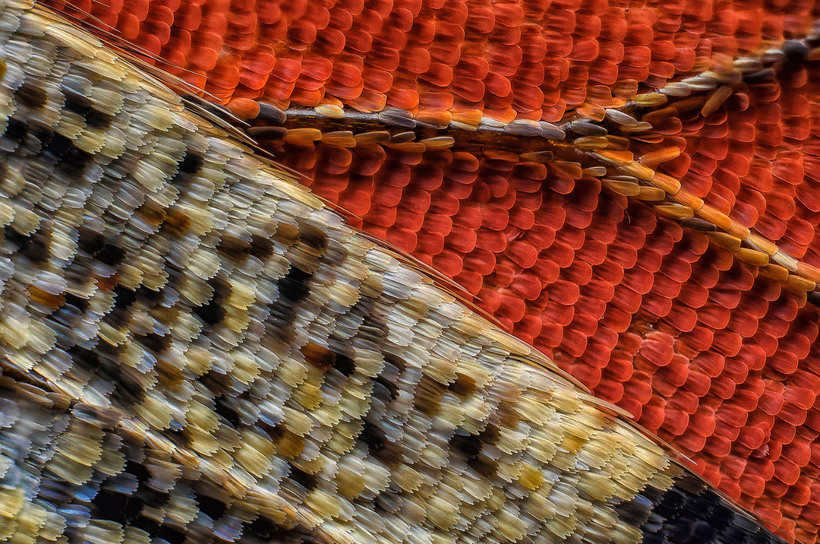
An image showing the enlarged view of a ladybug’s head, magnified by a factor of 10.

The size of a heliconid butterfly’s egg from the Nymphalidae family was magnified by a factor of 4.

Close-up of the venomous jaws of a millipede, magnified at 16x.
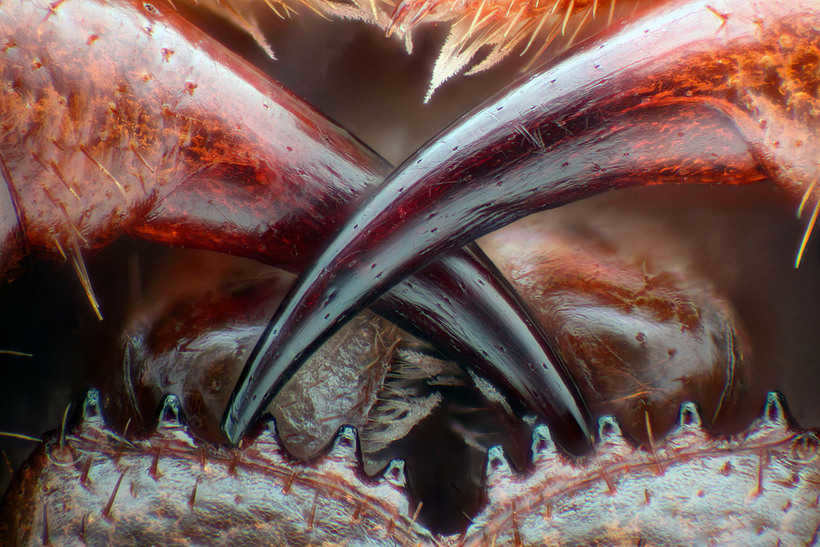
This image shows the process of air bubble formation from molten ascorbic acid crystals, magnified 50 times.
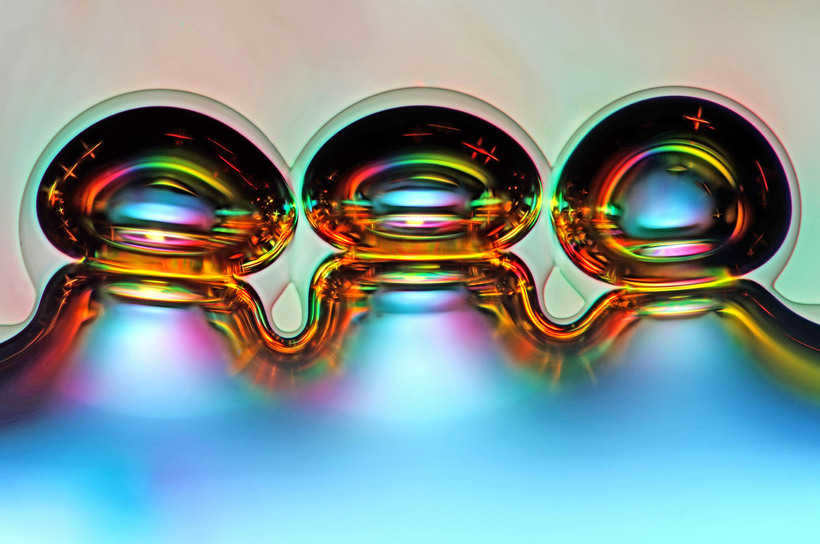
At a magnification of 50x, this is the appearance of an ant pupa.
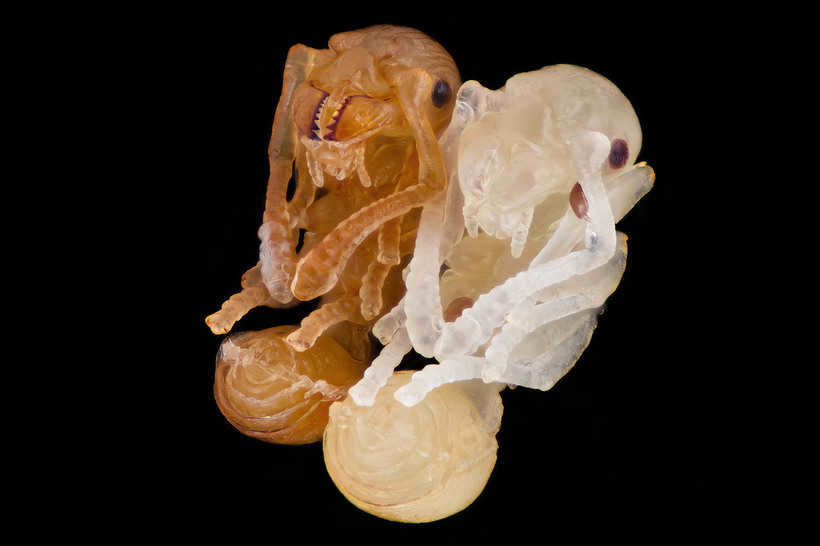
When you use a microscope to magnify a dragonfly larva by 25 times, you are able to observe its exquisite beauty.
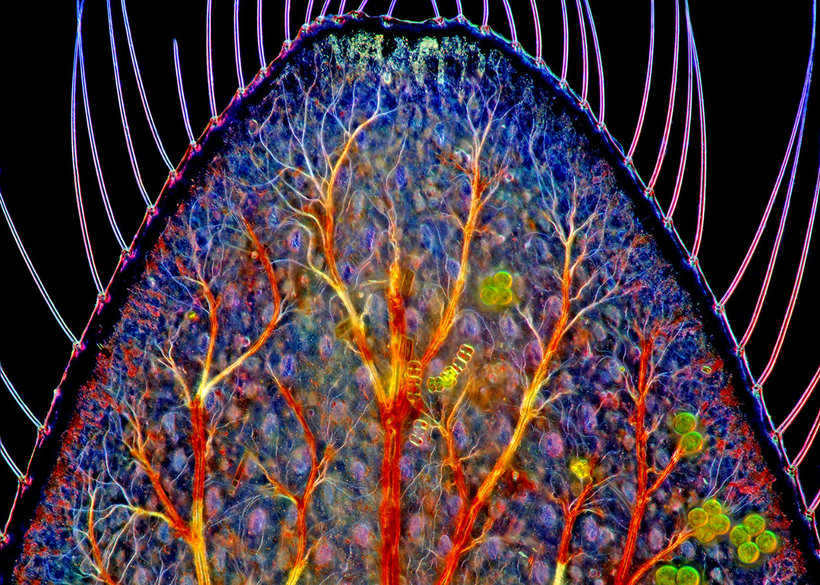
By magnifying this image 9 times, we are able to peer into the gaze of a leaping spider.

When observed under 50x magnification, the compound salicin bears a striking resemblance to a captivating artwork created by a skilled painter. This particular glucoside is derived from the bark of a tree and possesses a distinctly bitter flavor, as well as a low solubility in cold water and alcohol.

An approximate fivefold increase in size of a seed from the cephalopod plant.
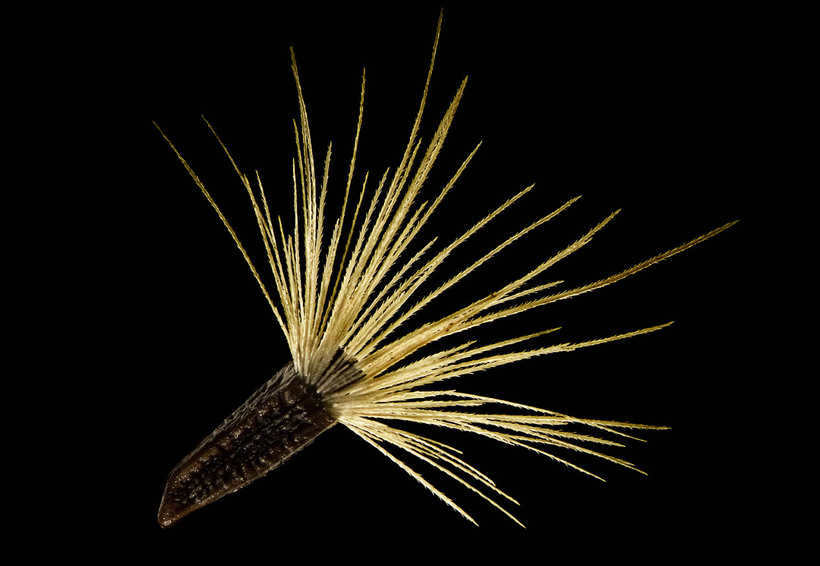
It is quite astonishing how copper crystals appear under a 5x magnification.
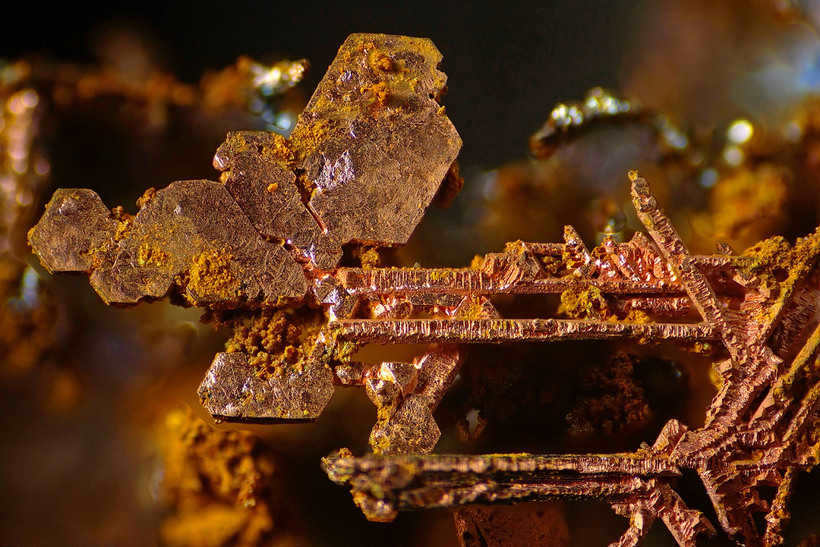
Examining the spiraled proboscis of a butterfly, magnified at 6.3x.
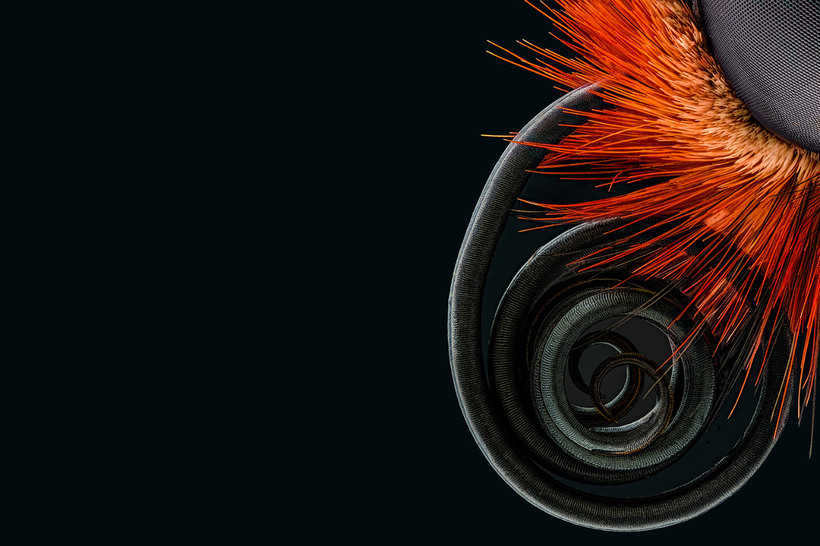
This is the result the photographer obtained when he magnified a leaf from a liverwort plant by 125 times.

When magnified 200 times, it is possible to observe the internal structures of an infusoria that are equipped with cilia.

Here is an enlarged image of a water-dwelling mite, magnified by 100 times.

The Chrysochroa buqueti rugicollis beetle, magnified 19 times.
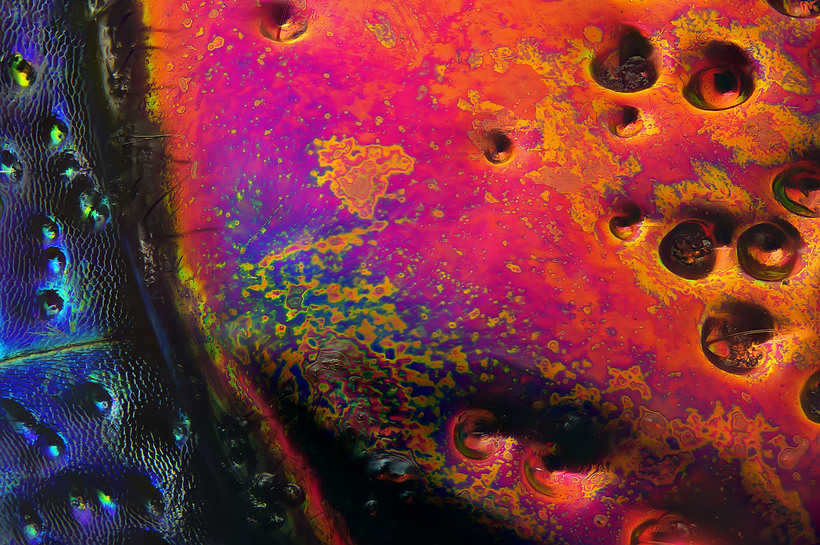
An in-depth look at a hairy caterpillar gripping a blade of grass tightly with its tiny legs.

A close-up look at the stamen of a black elderflower magnified 10 times.
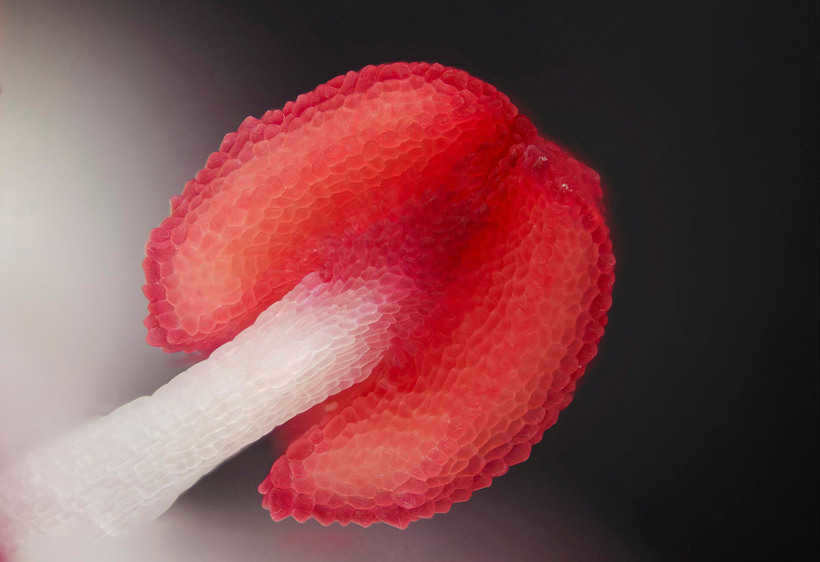
A close-up image of the eye of a wasp.

When selecting their initial telescope, individuals often prioritize the telescope’s magnification. How can one determine the magnification a telescope provides? What level of magnification is necessary to observe the craters on the Moon, the rings of Saturn, and the satellites of Jupiter? What is the highest practical magnification? This article will strive to address all of these significant inquiries.
Is magnification the most crucial feature of a telescope?
Comparing the surface of Mars at the same magnification using telescopes with different apertures.
For many beginner space enthusiasts, the magnification of a telescope is often seen as its primary characteristic, leading them to seek out telescopes with the highest possible magnification. However, is magnification truly the most important factor when it comes to telescopes? While it is undoubtedly a significant feature, it is not the sole determining factor. In order to obtain a detailed and clear image of an object through a telescope, it is essential that the telescope utilizes high-quality glass optics, including advanced lenses in refractors and parabolic mirrors in reflectors. Additionally, the quality of the eyepieces used also plays a crucial role.
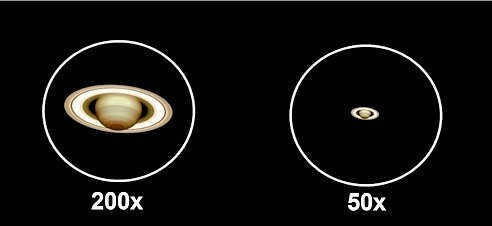
An image of Saturn at 200x and 50x magnifications.
The potential amplification of a telescope relies on its original parameters: aperture diameter, focal length, and the eyepieces employed. Adjusting the eyepieces and pairing them with a Barlow lens allows for a change in amplification. To determine the amplification of the telescope, a simple formula is used: G=F/f, where G represents the telescope’s amplification, F stands for the focal length of the telescope, and f denotes the focal length of the eyepiece. The focal length of a telescope is typically indicated on its casing or in its description, while the focal length of an eyepiece is always specified on its casing. Here’s an example: The Sky-Watcher 707AZ2 telescope has a focal length of 700 mm. When observed with a 10 mm eyepiece, it provides an amplification of 70 (700/10 = 70). If a 25 mm eyepiece is used, the amplification becomes 28 (700/25 = 28). By utilizing a Barlow lens, higher amplifications can be achieved as it increases the telescope’s focal length multiple times, depending on the Barlow lens’s own amplification. For instance, when a 2x Barlow lens is employed with the Sky-Watcher 707AZ2 telescope and a 10 mm eyepiece, the amplification becomes 140x instead of 70x.
The highest possible magnification that can be achieved with a telescope.
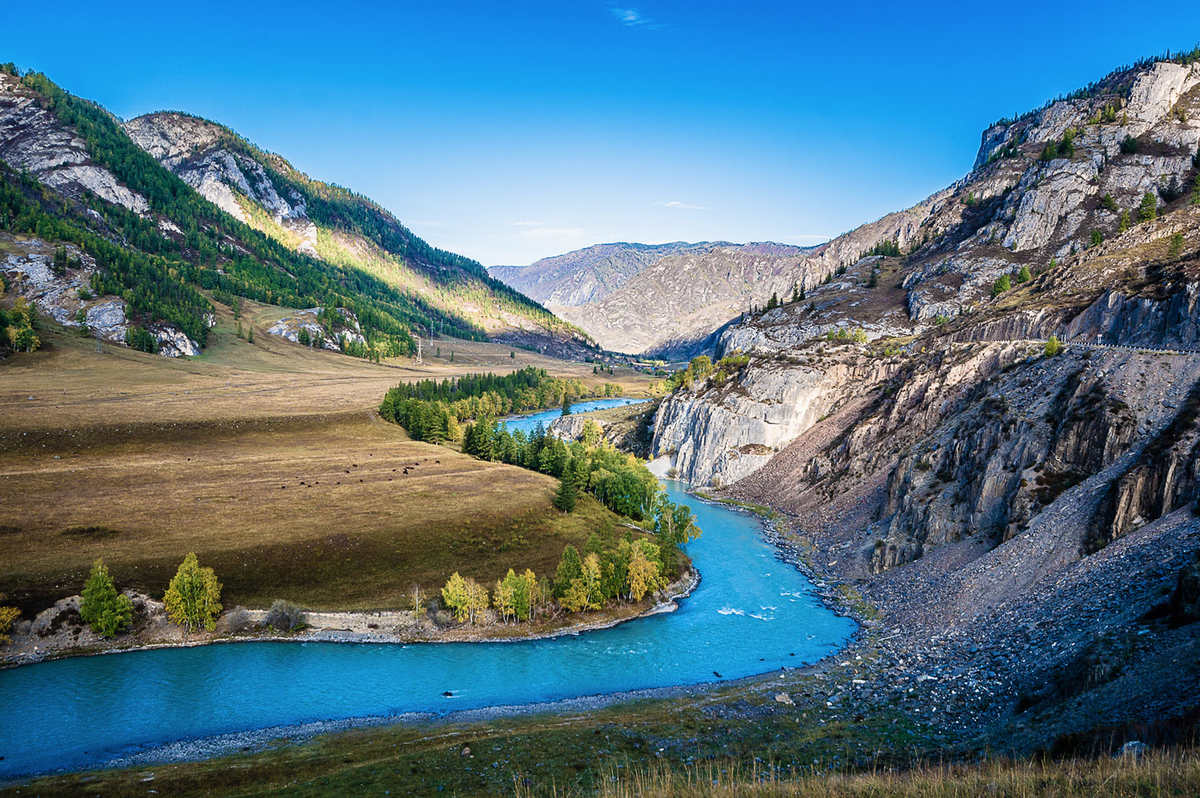
The focal length of the eyepiece is specified on its body.
In the field of optics, there exists a concept known as the maximum useful magnification of a telescope. This refers to the magnifications that the optical system of a telescope can achieve without any loss in image quality. Theoretically, it is possible to obtain very high magnifications even with small telescopes by using short-focus eyepieces and powerful Barlow lenses. However, such manipulations are not meaningful because the optical system of the telescope is limited by its diameter and the quality of its optics.
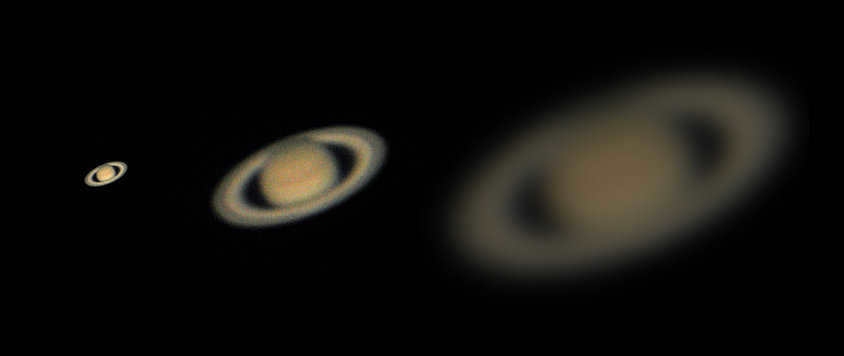
Observation of Saturn at different levels of magnification.
When viewing Saturn at very high magnifications, the image may not be sufficiently bright and clear. Therefore, it is important to consider the maximum useful magnification when selecting a telescope. The maximum useful magnification is determined for each telescope using a simple formula G max=2*D, where G max is the maximum useful magnification and D is the aperture (the diameter of the lens or main mirror). For instance, a telescope with an aperture of 130 mm would have a maximum useful magnification of 260x.
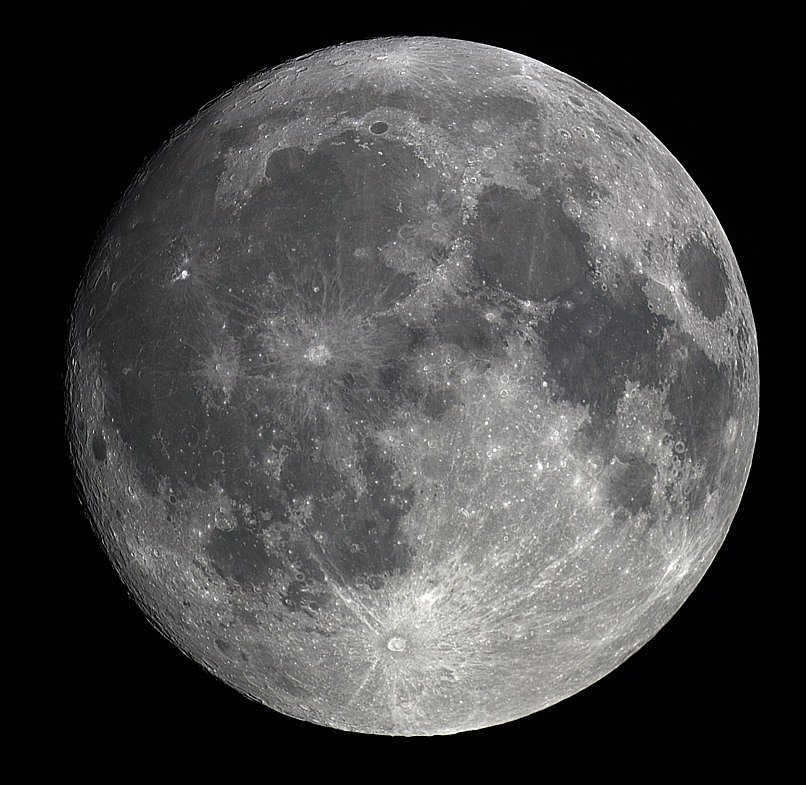
Observing the Moon at a 50x magnification.
It is important to exercise caution when reviewing the specifications of a telescope. Some manufacturers may claim exaggerated figures, such as a magnification of up to 600x. However, it should be noted that achieving such high magnification requires a minimum aperture diameter of 300 mm, and even then, you may encounter distortions caused by the Earth’s atmosphere at this level of magnification.
What is visible through a telescope at various levels of magnification?
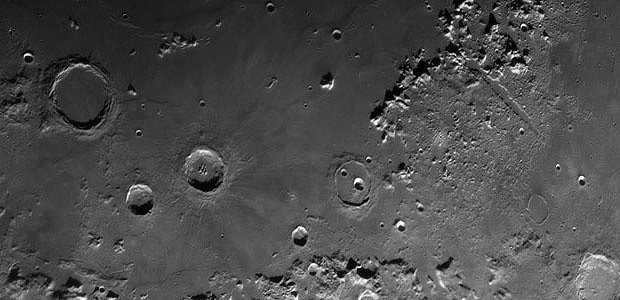
The Moon’s topography magnified at 350x.
- To fully observe the Moon and have its entire disk fit within the field of view, a magnification of 30-40x is sufficient. The Moon is a large and relatively close object in the sky, occupying 0.5 degrees of space. By using an eyepiece with a magnification of 100 or more, you can observe the lunar surface in great detail, including craters of various sizes, mountain ranges, and seas.
- To observe deep space objects such as star clusters, hydrogen nebulae, and galaxies, you will require various magnifications. For extended faint objects like nebulae, wide-angle eyepieces with a field of view of 60 degrees or more and additional light filters for better contrast are necessary.
- If you opt to observe a bright, compact object like a planetary nebula, such as the M57 “Ring” nebula, higher magnifications of 200x or more and filters specifically designed for nebulae observation will be needed.
- When using a telescope to observe individual stars, it is not necessary to use high magnifications, as the star will always appear as a point of light. If the star appears as a disk or a ring, it indicates that the focus is incorrect or the telescope’s optics are of poor quality.
- Higher magnifications are required when observing double and multiple star systems in order to distinguish their individual components in the telescope.
When selecting a telescope, it is important to consider its equipment. It is essential to have a variety of eyepieces that enable you to achieve various levels of magnification, including the maximum useful magnification. Occasionally, manufacturers cut costs on accessories, focusing on the quality of the telescope itself. In such instances, it is necessary to purchase eyepieces separately. This is typically the case with top-tier models that feature expensive optics, for which eyepieces of the same high caliber are required.
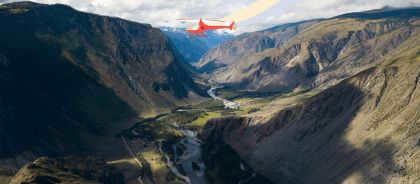

Visiting Altai is a cherished desire for every individual who grew up in Russia. This is an undeniable fact. However, why does this journey remain an unfulfilled aspiration for many? Various challenges arise during the planning process: how to create a travel itinerary in Altai? Which destinations should be prioritized? What are the must-see attractions? How much baggage should be brought along? Is it feasible to cover everything in a single trip? Is it worthwhile to travel to the other side of the country if there isn’t enough time to explore all the attractions at once?
250.3 th.
6
9 minutes of reading
Sights of Altai on the map
Seminsky Pass
If you want to witness the breathtaking views of Altai, then you must visit the Seminsky Pass. From the observation deck, you can witness the stunning sight of the sun illuminating the mountains during dawn, the gentle breeze swaying the treetops, and the awakening of nature. It is a place where time seems to stand still, away from the hustle and bustle of city life. Here, you can appreciate the untouched beauty of Altai, breathe in the scents of healing herbs, and find tranquility by the nearby lake.
What makes this experience even more special is that you don’t have to completely disconnect from civilization.
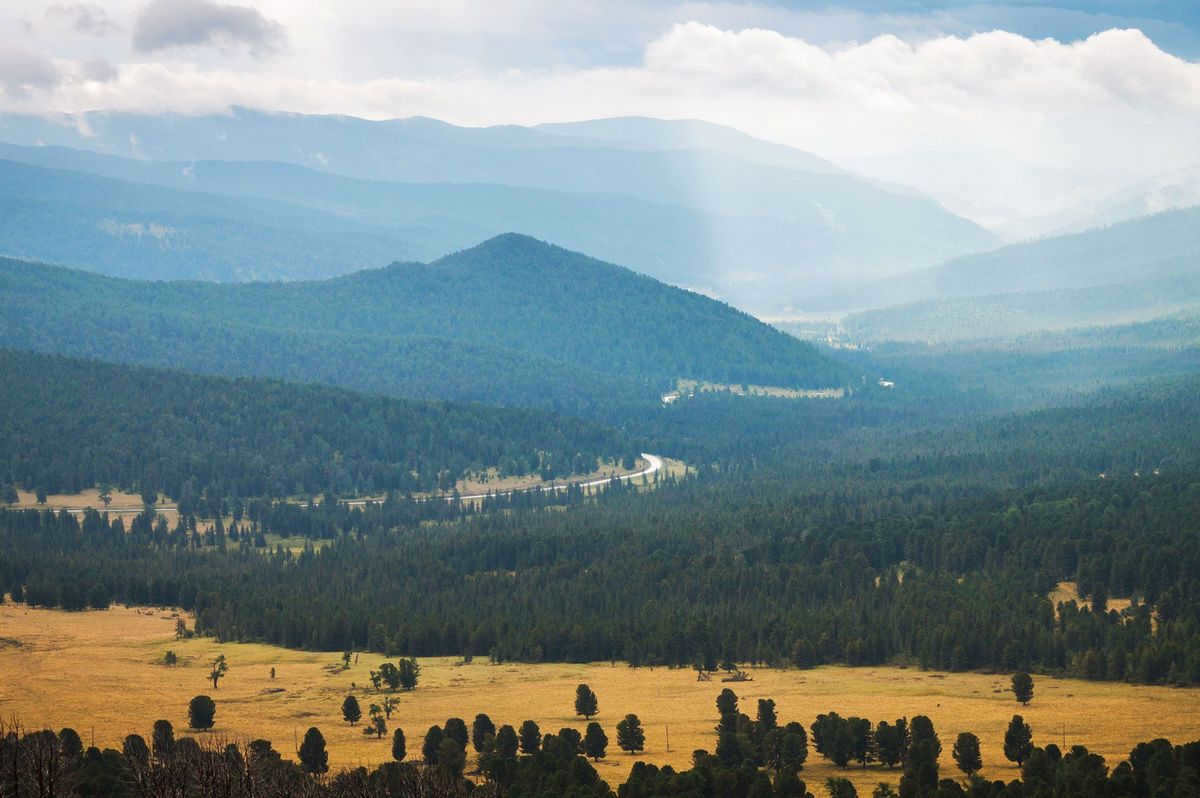
Seminsky Pass is the most elevated point along the Chuisky tract, yet it is also the most accessible to traverse. It is a simple journey to reach this location: the path is completely paved, and there are various amenities available, including an observation deck, tourist centers, parking lot, trading rows, and the Seminsky training camp situated at the summit.
Directions to the Destination
Seminsky pass can be found at 583 km of Chuisky tract, 238 km away from Biysk. The closest village is Shebalino. The climb to the pass is straightforward and gentle, covering only nine kilometers without any steep inclines or hairpin bends, so apart from the possibility of your ears popping, there are no other inconveniences. It is just the perfect way to start your Altai adventure.
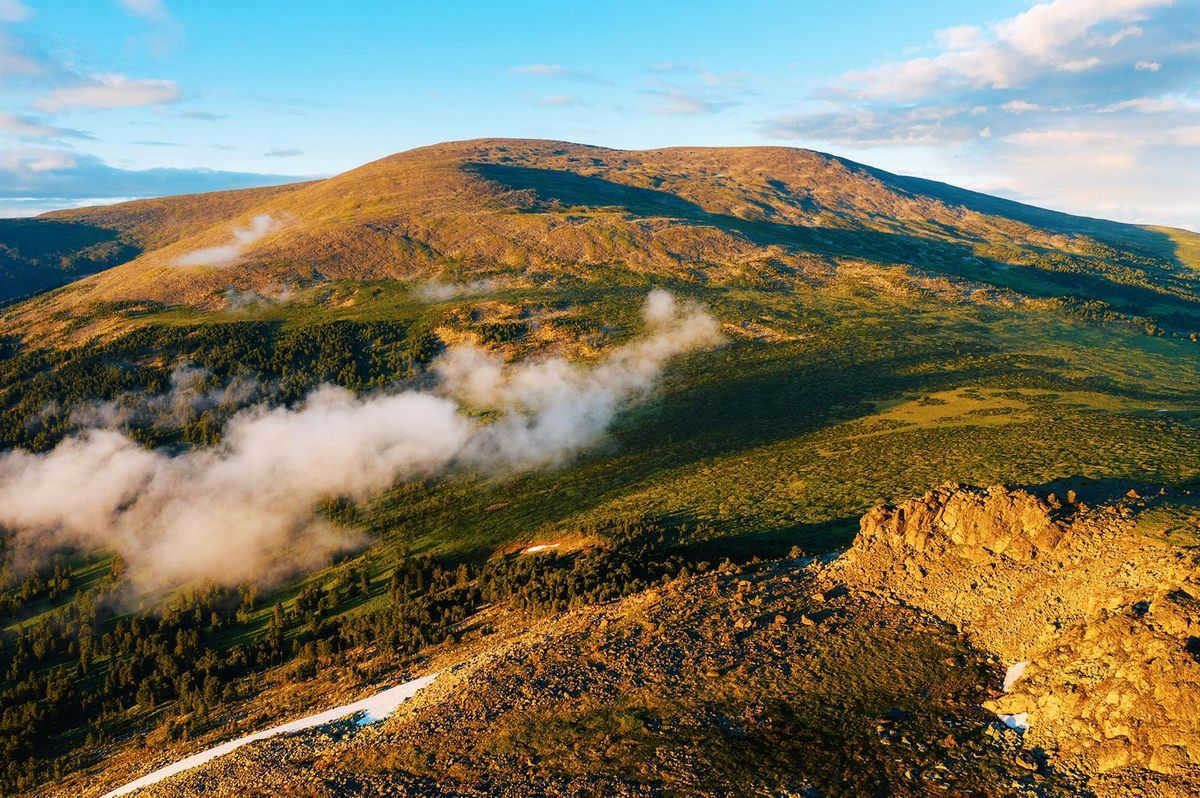
Attractions in the area
The lower and upper parts of Sarlyk mountain are the highest points of the Seminsky ridge; there is also a monument commemorating the 200th anniversary of the voluntary inclusion of the Gorny Altai into Russia, as well as the Seminsky and Tuyuk lakes.
The period between May and September offers the optimal opportunity to witness the main attractions of Altai.
During the month of May, Altai welcomes visitors with vibrant meadows, gentle sunlight, lush greenery, and flowing rivers. However, occasional rain showers and thunderstorms may dampen the experience. The average temperature is around +17° C, while in the mountains it drops to +5° C.
June provides an even better experience as the sun remains mild, the grass stays green, and the roads are not yet overcrowded with tourists. The average temperature rises to +20° C, with the mountain areas maintaining a cooler +10° C.
By July, the temperature rises significantly to around +30° C, providing the perfect conditions for swimming in small lakes and achieving a nice tan. However, it’s important to note that along with the rising temperature, prices also tend to increase.
The first half of August is similar to July in terms of weather, but as the days progress, the temperature gradually drops and the number of tourists decreases.
September is a stunning month, but it can be chilly for your desires to explore Altai – it is still suitable for hiking, but the nights are too cold for camping.
Discover Mount Devil’s Thumb
While traveling from Biysk to Seminsky Pass, take a quick break and ascend to the Devil’s Finger. The climb doesn’t take long, but the panoramic view is breathtaking – no wonder it is featured in almost every “Must-See Attractions in Altai” list.
Not Just Another One, But Truly Unique
There are countless mystical formations scattered across the globe – towering rock formations that reach towards the heavens. However, our very own Altai region boasts an extra special one, complete with a protruding fingernail that draws visitors from far and wide.
According to local legends, this peculiar formation is said to be the petrified finger of a notorious villain named Churto. The villain had set his sights on seizing these lands, but the brave Altai warriors successfully defended their homeland. Churto was ultimately vanquished and his finger became a permanent reminder of his defeat. An alternative version of the story suggests that it was the Moon itself that intervened, descending to Earth and striking down the enemy with such force that only the finger and its fingernail remained intact.
The Devil’s Finger is truly an amazing destination – enthusiasts believe that this rock possesses an incredible force capable of healing infertility and revitalizing one’s energy. Take the opportunity to climb to the summit and witness the breathtaking view from the observation deck: the Katun River valley and the entire Altai region spread out before you, as if held in the palm of your hand.
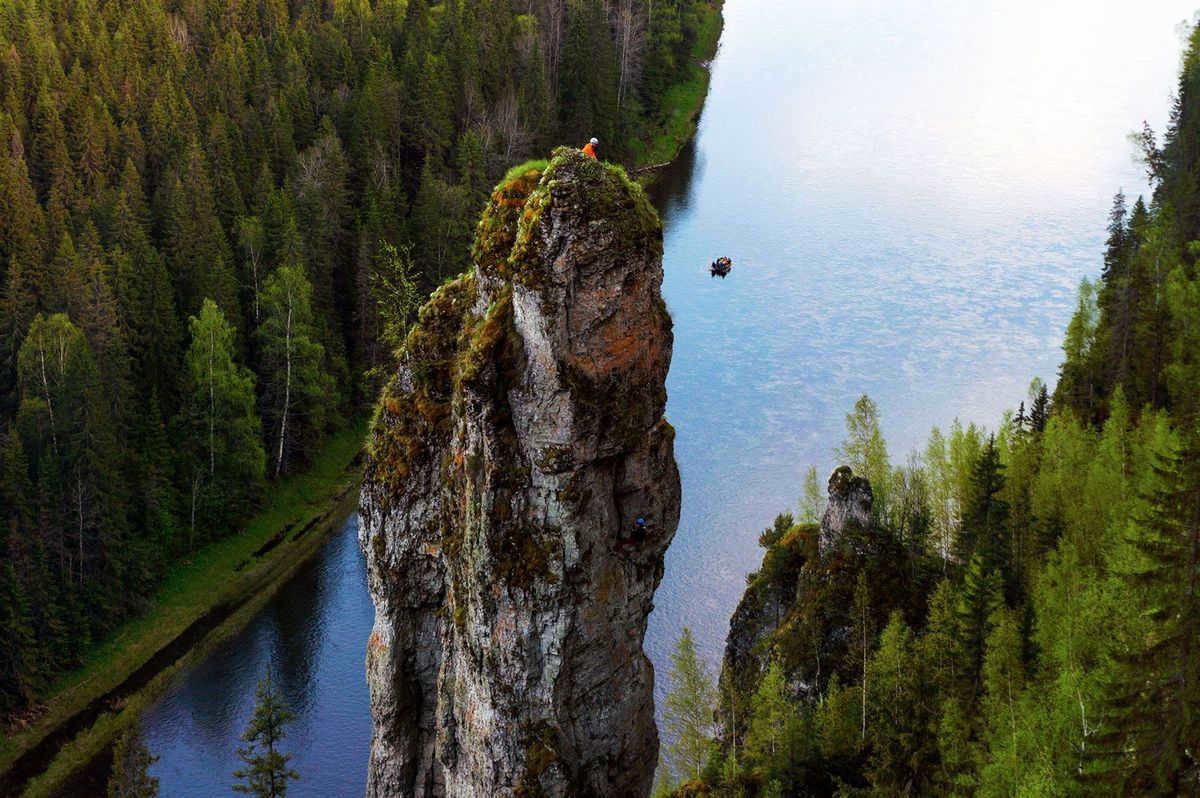
How to reach the destination
If you are coming from Biysk, you can take the route through the village of Souzga, which is approximately 114 km away. As you approach, you will notice a telephone tower that serves as a landmark, located not far from the mountain.
Chike-Taman pass
Adding to our list of must-visit places in Altai is the Chike-Taman pass. This pass has gained significant fame over the years, with many researchers in the 20th century writing about its treacherous nature, steep ascent, sharp turns, and other difficulties along the Chuisky tract. However, a new and well-maintained automobile road has been constructed here, making it easily accessible. The old and winding path, which is now mostly overgrown, adds a touch of charm to the already breathtaking view of the Terektin ridge that can be seen from the observation deck.
The size is not important!
Even though the Chike-Taman Pass is 400 m lower than the Seminsky Pass, it is still regarded as more challenging and higher by travelers. This perception is due to the steep ascent and serpentine on the descent.
Directions
You can find the pass at 685 km of the Chuisky Tract, which is 320 km away from Biysk and 75 km away from the Seminsky Pass. The ascent and descent are both four kilometers long.
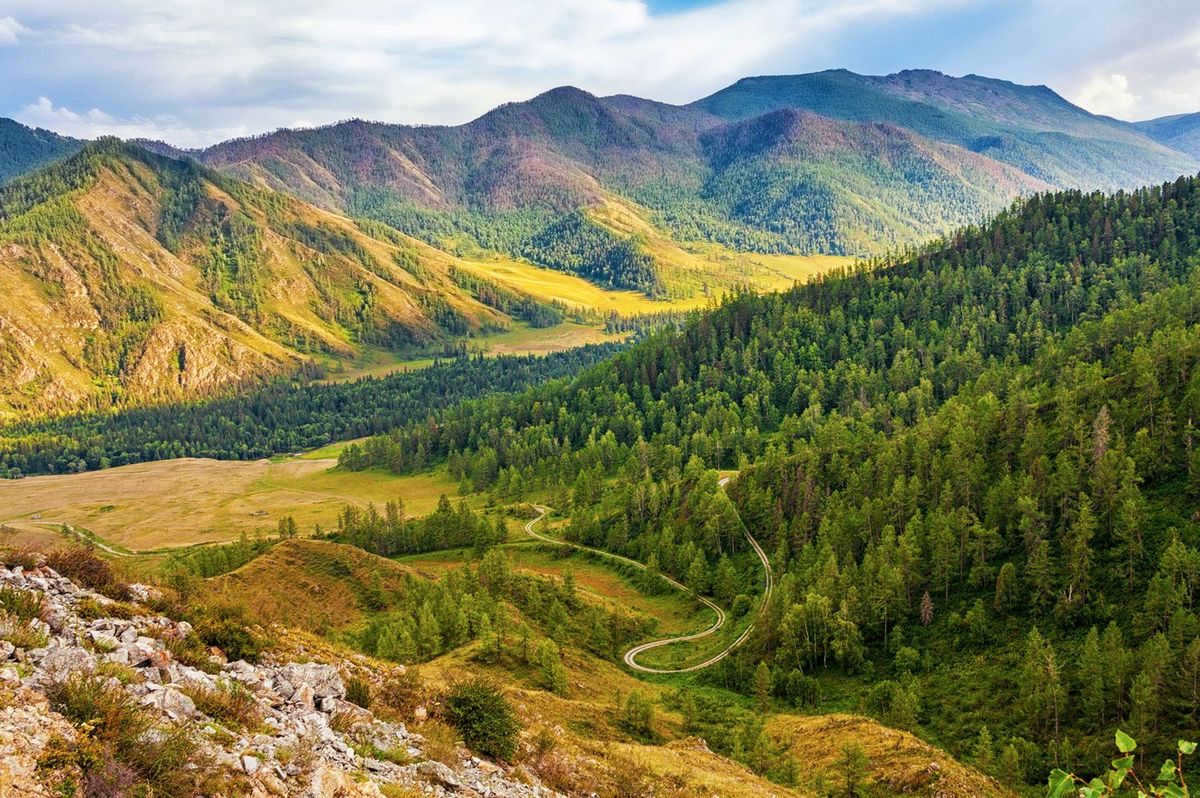
Attractions in the Surrounding Area
Notable sights in the vicinity include the Monument to the builders of the Chuisky Tract, Kur-Kechu tract, and the geyser lake.
Lake Teletskoye
Lake Teletskoye is renowned for its cold water all year round, its massive size, diverse fish species, and stunning landscapes. Visitors have the option to stay at one of the tourist centers or venture into the wilderness. Activities available include fishing, guided tours to nearby mountains, marveling at cascading waterfalls, or even practicing meditation. Whatever you choose to do, be sure to dress warmly!
How to Reach Altai
Traveling from Moscow to Gorno-Altaisk. Most domestic airlines offer direct flights to Gorno-Altaisk, and if you book your tickets in advance, you can find some great deals, especially on direct flights. The flight duration is typically between four to five hours. If you prefer a layover, you can also find flights with transfers.
Traveling from Moscow to Biysk. For those who enjoy a more romantic and leisurely journey, taking a train to Biysk is a great option. Although it will take around three days, the experience of sleeping to the sound of wheels is truly unique. When comparing ticket prices and calculating the cost savings compared to a flight, don’t forget to factor in the cost of food during the journey.
Traveling from Novosibirsk to Gorno-Altaisk. This route is perfect for travelers who don’t begin their journey in Moscow – there are flights to Novosibirsk from nearly every city in Russia (and they’re affordable!), and from there, you can reach Gorno-Altaisk by either plane or bus.
Although Lake Teletskoye is a highly sought-after destination in Altai, many tourists are unable to visit it if they solely focus on attractions along the Chuisky road.
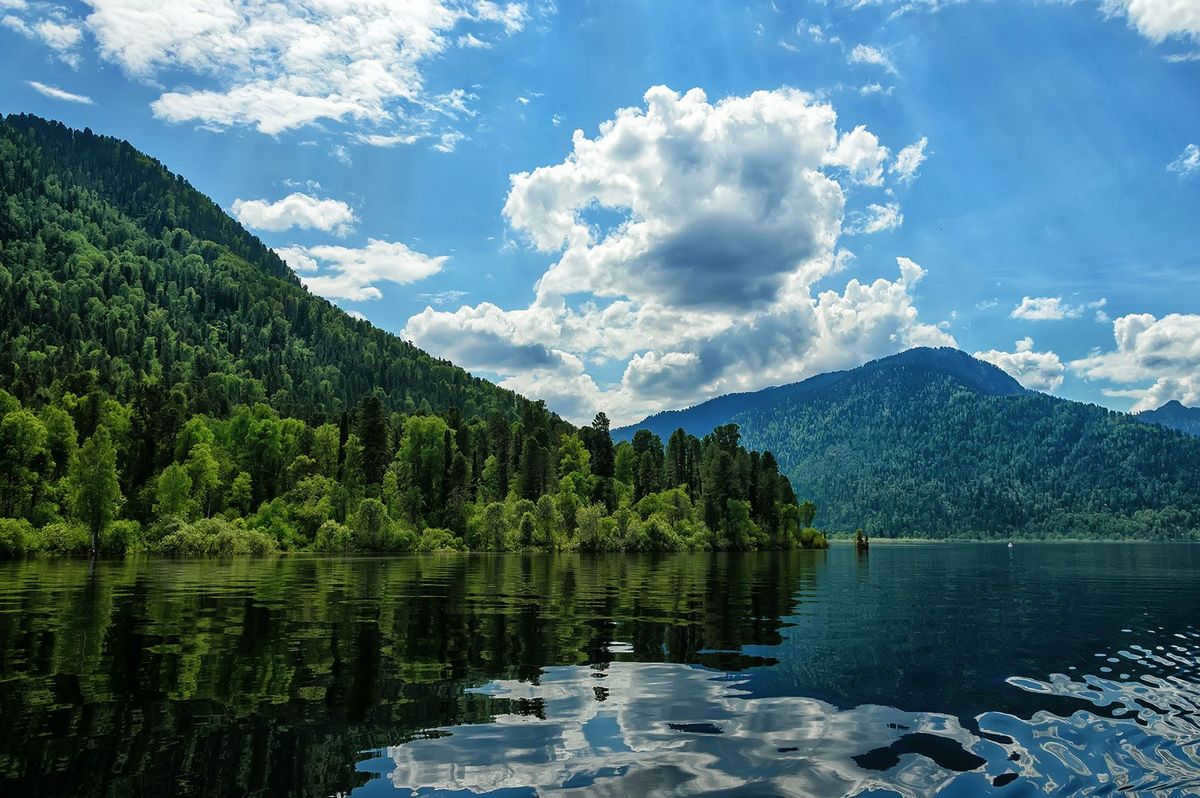
Those who make their way to Lake Teletskoye are never disappointed with the journey. Even with the growing number of hotels and campgrounds along the coast, the unique atmosphere of this place remains undisturbed – it’s a perfect escape from worries and a chance to recharge in the midst of nature.
The locals hold the lake in high regard, believing it to be sacred, while esotericists are captivated by its mystical power. Tourists from all around the world travel to Altai just to catch a glimpse of Lake Teletskoye and experience its enchantment firsthand. Are you curious to see what this place has in store for you?
As a majority of the lake falls within the Altai State Natural Biosphere Reserve, a pass is required to visit. You can easily obtain one in the village of Artybash or the settlement of Yailyu.
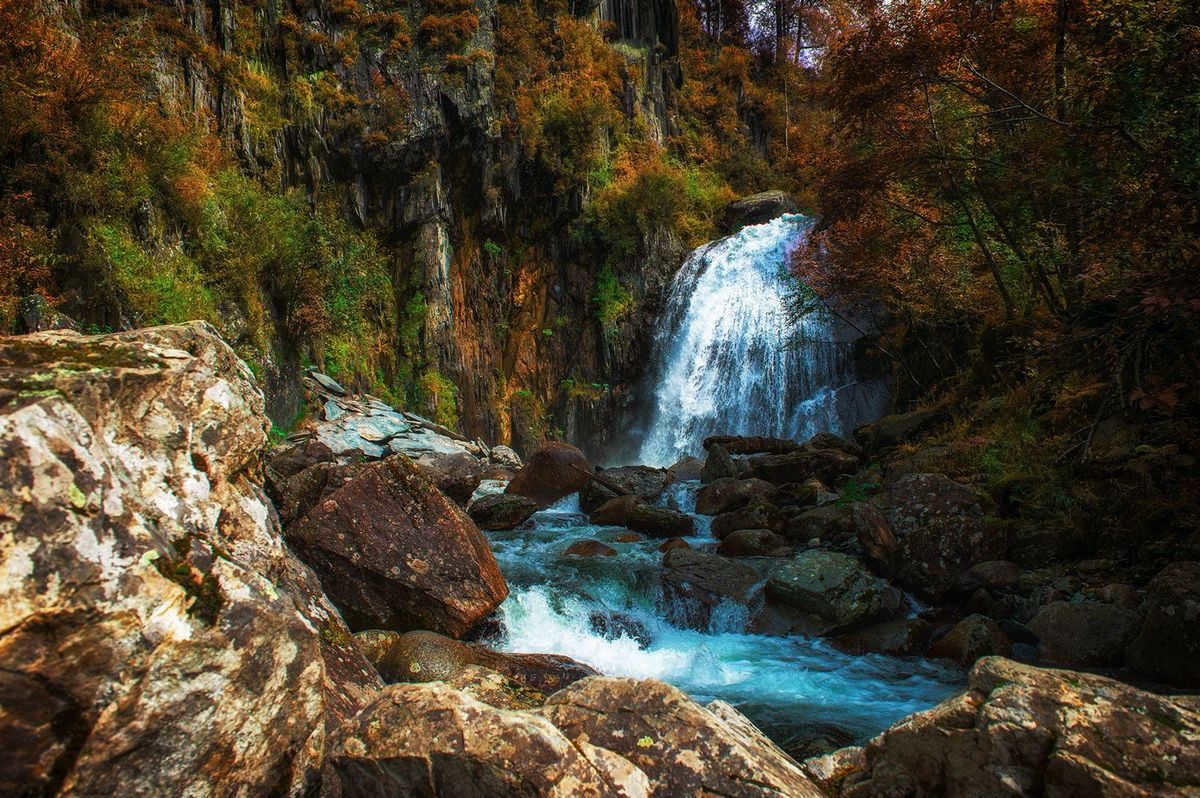
Directions
If you want to reach Lake Teletskoye, the easiest option is to drive from Gorno-Altaisk. The distance to the nearest village, Artybash, is 269 km, and the journey takes approximately six hours.
Attractions in the Surrounding Area
When exploring the area near you, there are several must-see sights. These include the magnificent Korbu and Chodor waterfalls, the picturesque Karagai bay, and the breathtaking Charyshman valley. For those interested in local culture and wildlife, a visit to the zoo and ethnopark in Artybash village is highly recommended. Additionally, adventurers can embark on a thrilling journey to the Tilan-Tuu and Kokuya mountains, with the latter accessible via an exhilarating elevator ride.
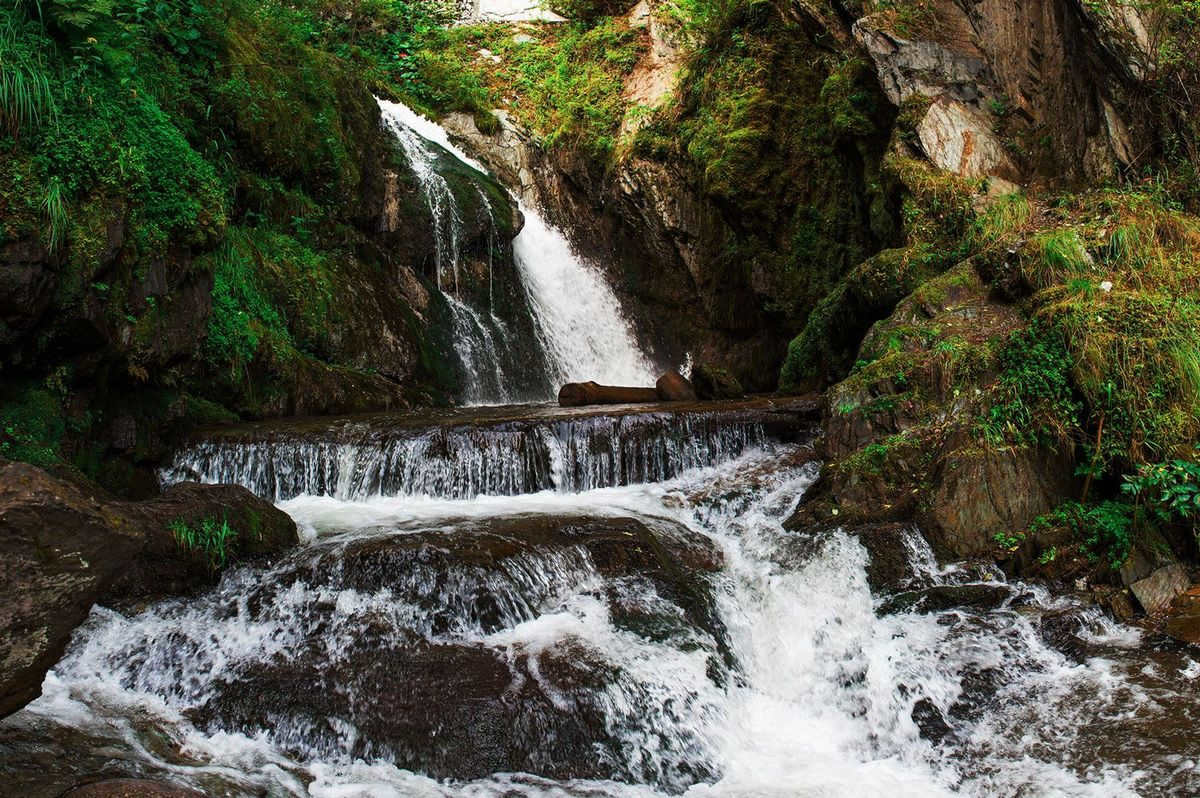
Multinskiye lakes
Here we have arrived at the most famous tourist spot on the classic Altai sightseeing list – Multinskiye lakes. There are five lakes in total: Lower, Middle, Upper, Transverse, and Strong (quite logical, isn’t it?). The first three are usually included in the itinerary by tourists. Among them, the Lower Multinskoye Lake is the most popular. It is the largest lake, easily accessible, with campgrounds and all the necessary amenities for a comfortable vacation by the water.
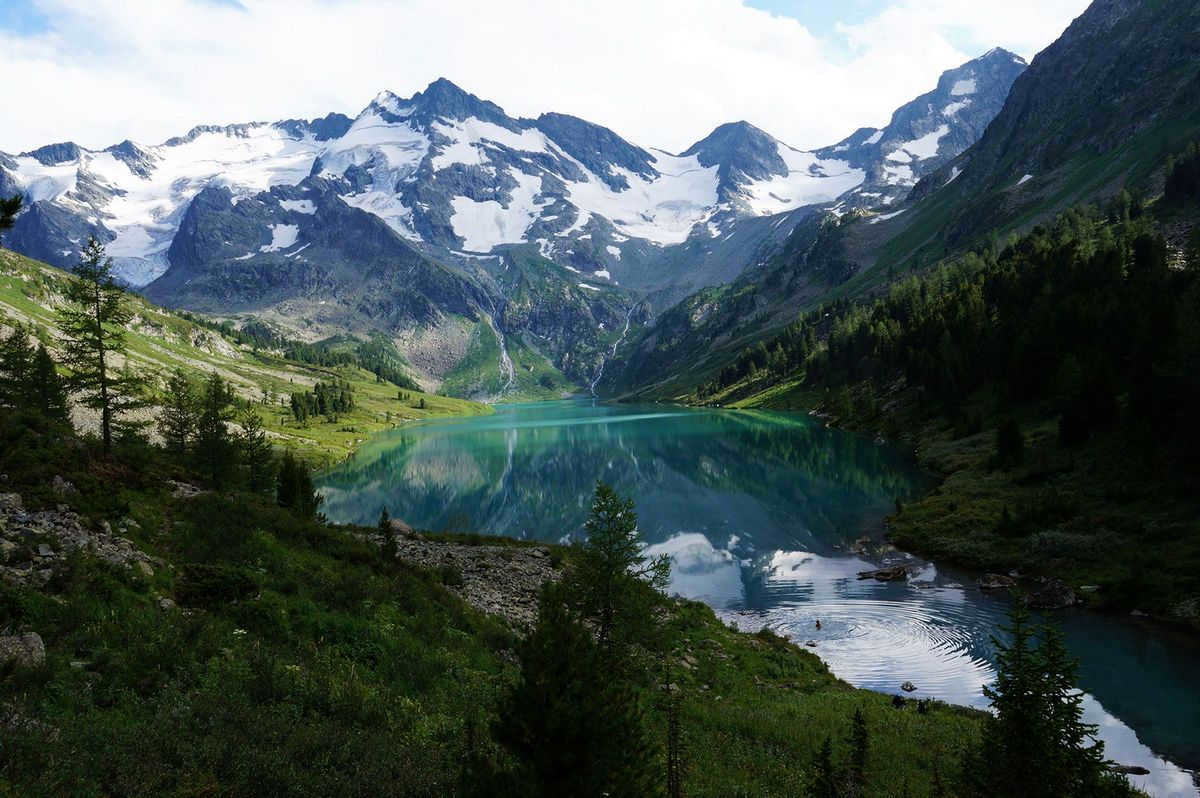
You won’t be able to tell whether it is Altai or the Alps just by looking at the photo.
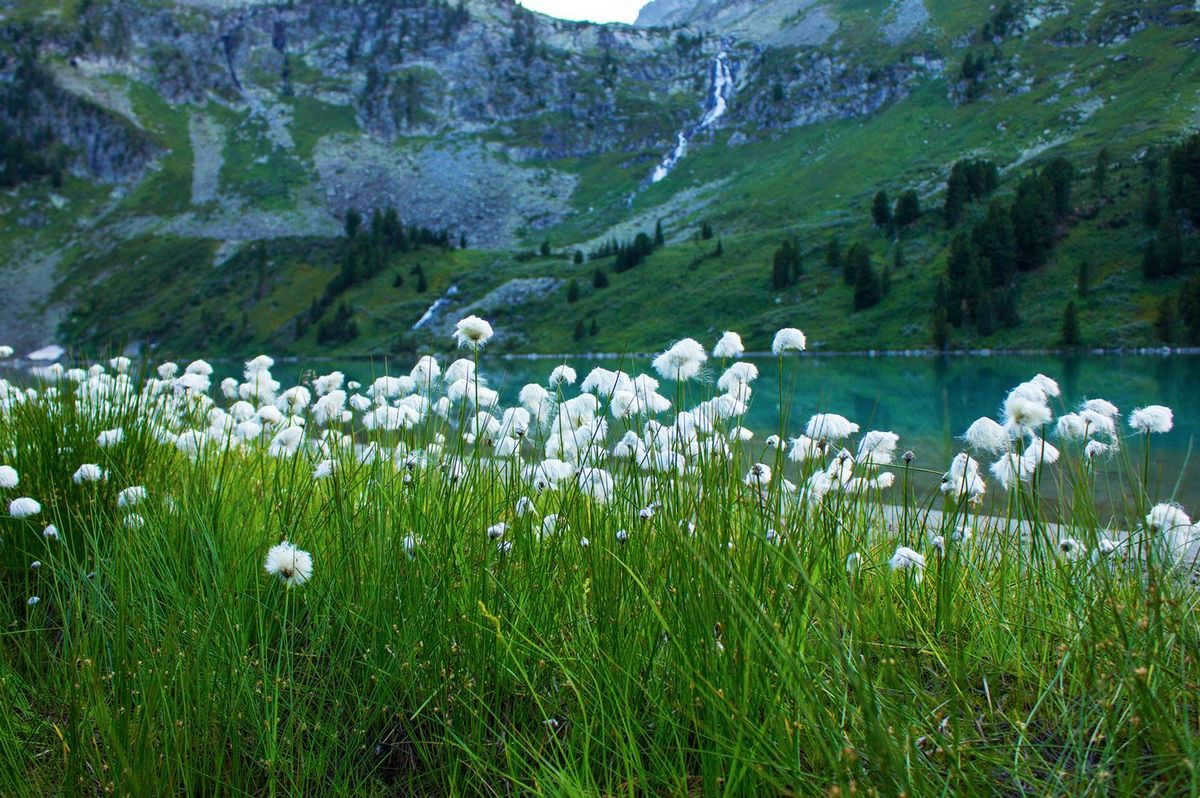
How to reach the destination
To reach the Multinskiye Lakes from Biysk, you have to cover a distance of 535 km by passing through Seminskiy pass.
Ensure the safety of your documents
While visiting the lakes, it is important to carry your passport as the lakes are located near the border of Kazakhstan, where document checks can take place. Russian citizens only require a passport, but visitors from other countries will need to obtain a pass as well. The pass can be obtained by making a request at the FSB department in Gorno-Altaisk.
Attractions in the Surrounding Area
There is a wide range of things to see in the vicinity. One of the most beautiful sights is the “Multinskiye Noises” water cascade, situated between the Lower and Middle lakes. Continuing along the road, you will reach the Upper lake, which is located within the Katunsky reserve. To access the lake, you will need to pass through a checkpoint, coordinate your route with the gamekeepers, and pay a small fee.
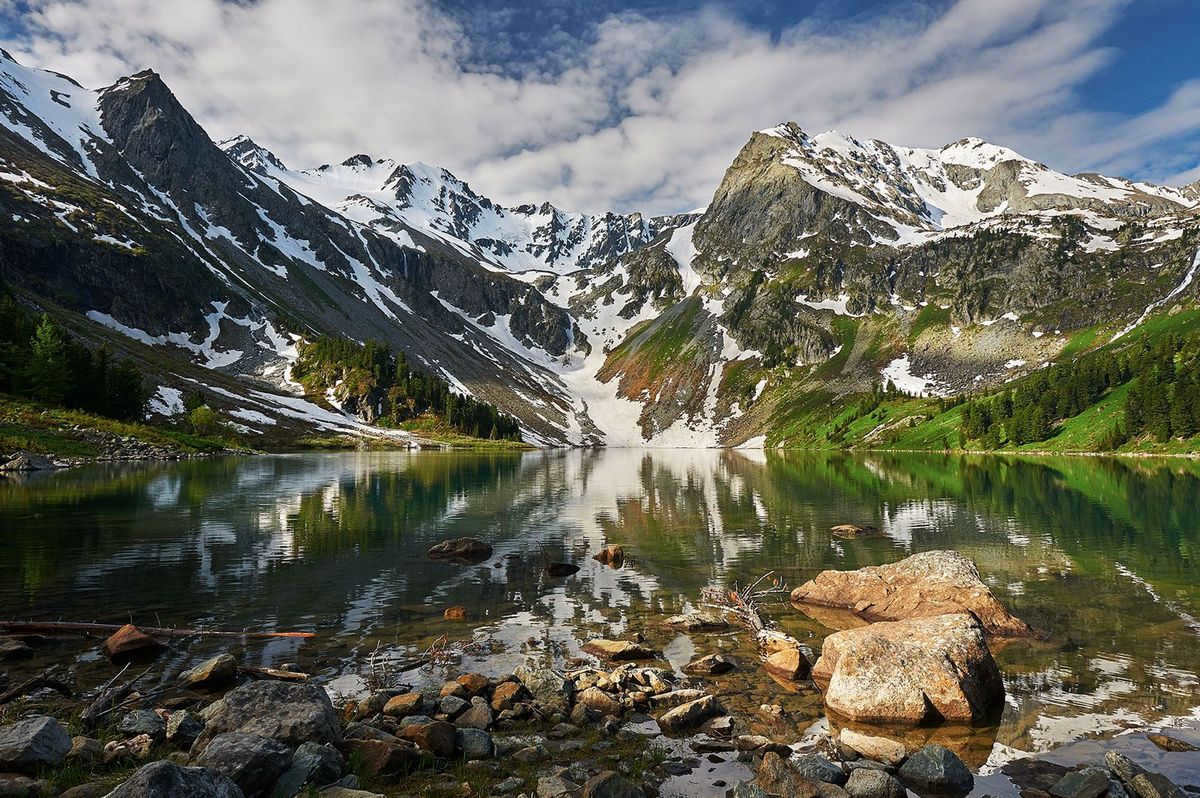
The Upper Multinskoye Lake
The Katu-Yaryk Pass
Are you prepared for the most astonishing journey along the serpentine road of your life? The pass dates back only thirty years – prior to 1989, there was nothing but a steep horse trail, but now there is a dirt road. It can be terrifying to ascend, but all fears are forgotten once you witness the breathtaking panoramic view from above – the meandering road, vibrant mountains, cascading mountain streams, waterfalls, and the majestic peaks of ancient trees. It will leave you in awe!
- The altitude from the base is 892 meters;
- The average incline is 18% (10°);
- The steepness of the slope is 70% (35°);
- The length is 3.9 km;
- There are 9 turns.
Directions
To reach the destination, you can take a ferry across Lake Teletskoye (the cost of ferrying one car is 10,000 rubles). Another option is to approach from the Aktash village, which is situated 100 km away from Katu-Yaryk.
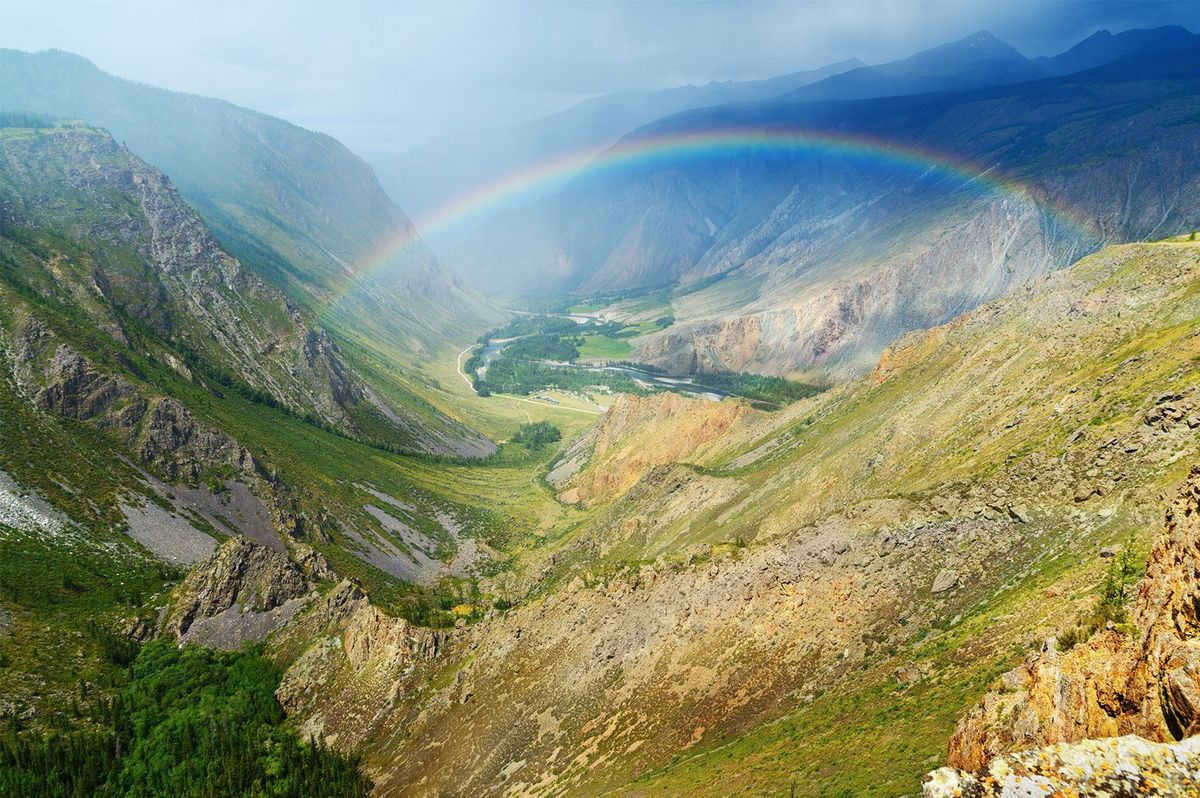
Where the Chuya and Katun Rivers Meet
Confluences always have a unique story to tell – just when you think you’ve seen it all and won’t be surprised, you find yourself picking your jaw up off the floor. The meeting point of the Chuya and Katun Rivers is no exception, with the surrounding landscape adding an extra touch of beauty.
Legends of Altai – Chui Oozy
Camel’s Neck is another name for the confluence, and there is a legend associated with it. Once upon a time, the locals in this area were trying to escape from the Chinese invaders. The nights in the Altai region can be extremely cold, so one clever Altai resident came up with a unique plan – he decided to hide inside a camel. The Altai resident skillfully slit the camel’s throat, removed its insides, and climbed inside for warmth (if this story were made into a movie, the actor playing this hero would surely win an Oscar – perhaps Leonardo DiCaprio would be the perfect fit!). The next morning, the hero emerged from his unusual hiding place to discover that a massive hailstorm had completely devastated everything and everyone around him, yet miraculously he had survived unscathed.
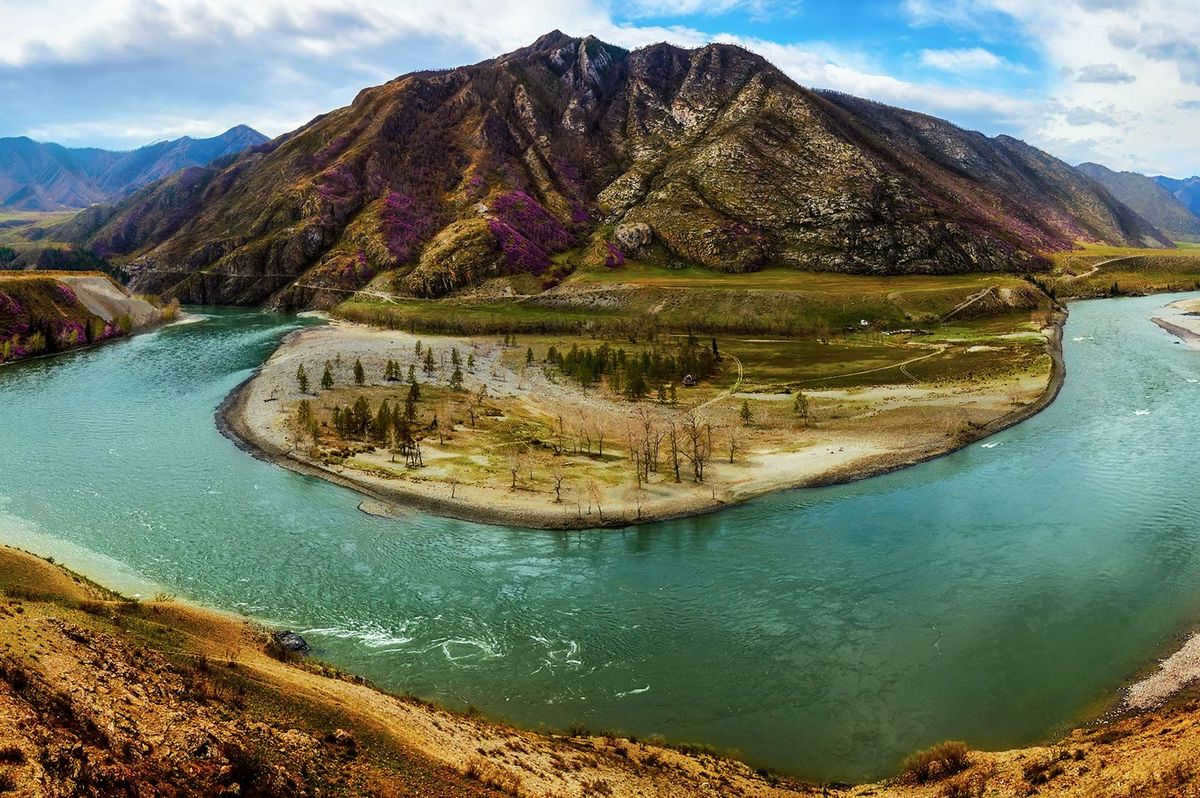
The confluence of the Chuya and Katun rivers, also known as the Camel’s Neck, is located in Altai.
How to reach the confluence
To find the confluence, you need to travel along the Chuisky Tract for 712 km and continue for another 11 km after passing the village of Inya.
Mount Belukha
After exploring the Camel’s Neck, we set our sights on Mount Belukha. The three-headed sacred mountain of Altai offers a challenging climb, but the reward is well worth it. Along the way to the summit (which stands at a height of 4506 m), you will encounter stunning blue lakes with pristine water and a diverse range of unique plant life. The base of the mountain is surrounded by dense coniferous forests, birch trees, tundra lichens, berry bushes, and rare flowers listed in the Red Book.
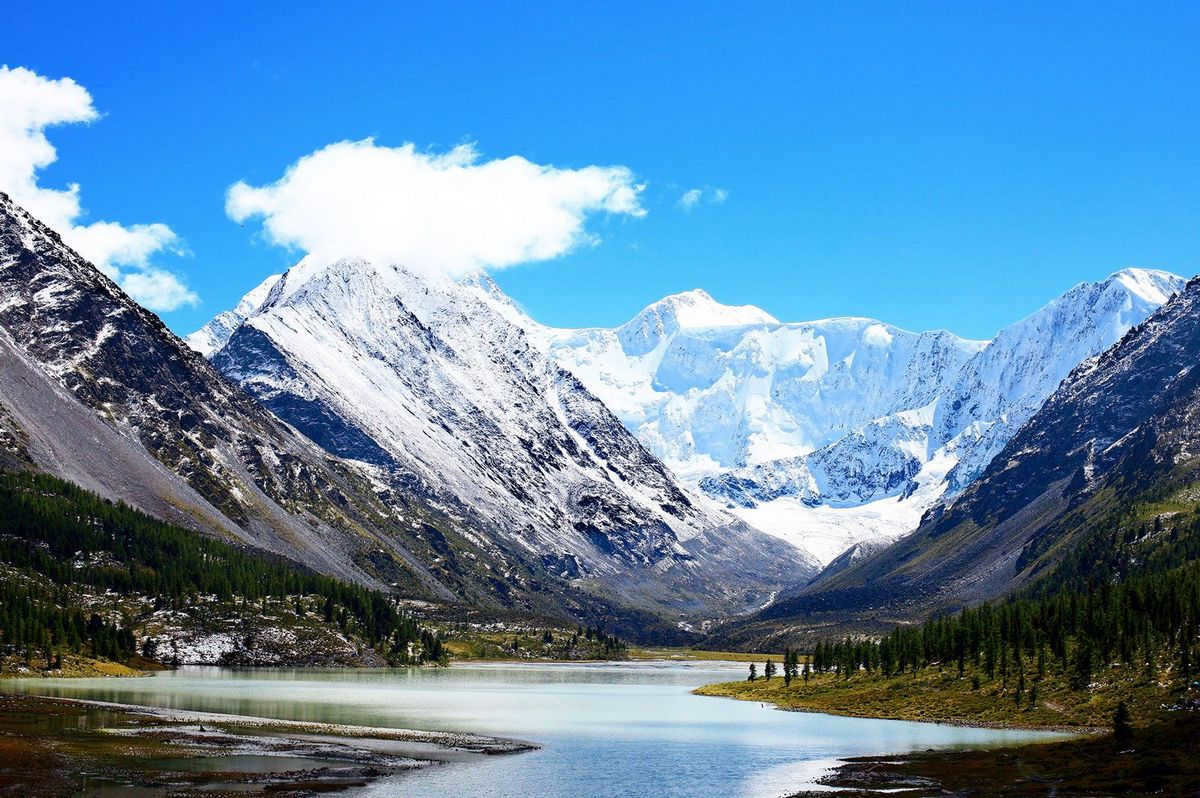
Summer is the ideal season for conquering the mountain, although even in July, you should be prepared for unexpected snowfall. The climb can be challenging and tiring, and if you’re unlucky with the weather, it may take longer to reach the summit. It is advisable to embark on such a journey with an experienced instructor or a group.
Excluding the time it takes to travel to the base of the mountain and for acclimatization, the ascent typically takes about two days. During the first stage, you will pass the “Watermelon” glacier, the Delaunay Pass, and the Mensa Glacier, and on the second day, you will make the final push to reach the summit.
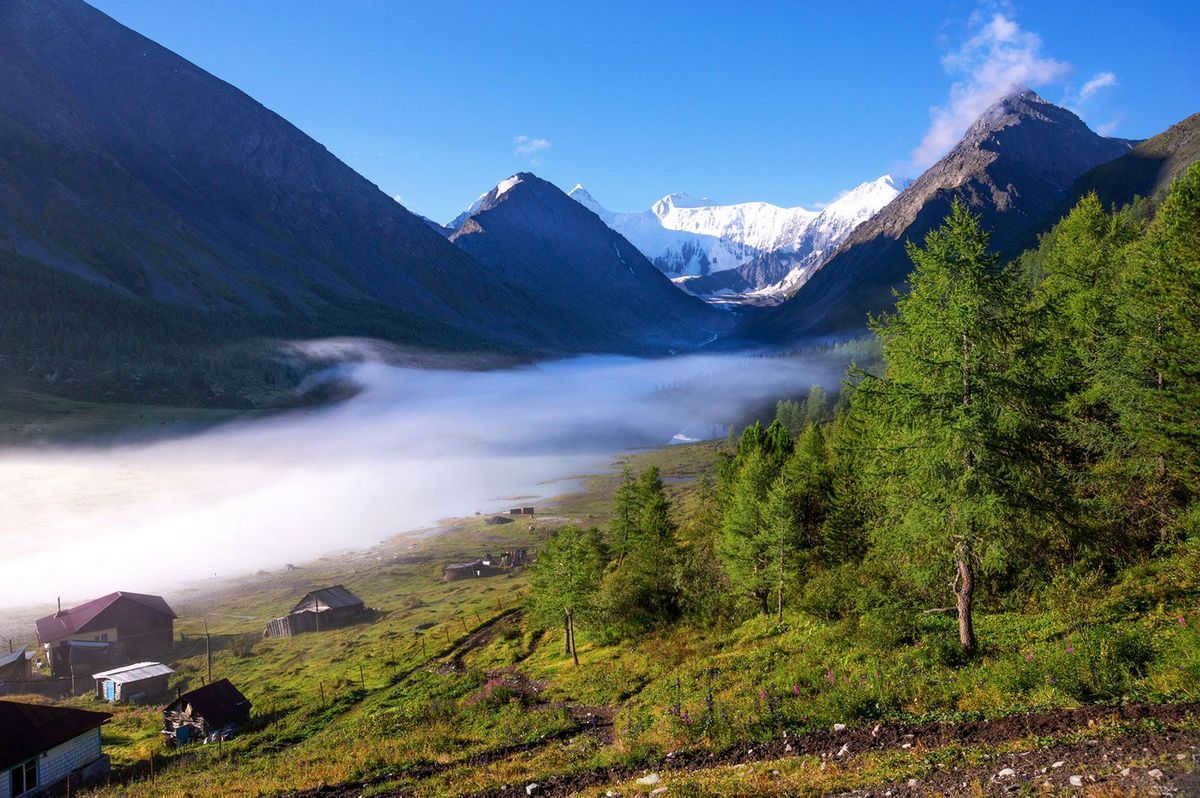
How to reach your destination
The journey to Belukha typically commences in the village of Tyungur. If you drive non-stop from Gorno-Altaisk, it will take you approximately nine hours to arrive.
What to explore nearby
Discover the Yarlu Valley, Akkem Lake, Tekilya Waterfall, and Tavda Cave.
The key to a successful trip to Altai: reserve your hotel through Ostrovok.ru + plan exciting excursions with Tripster.
What sights await in Altai? River cascades, majestic mountain peaks, and challenging mountain passes. What activities can you enjoy in Altai? Awaken to the radiant sunrise, refresh your face with invigorating water from the brook, marvel at the breathtaking vistas from your car window, conquer the mountains, inhale the crisp air, and listen to the captivating legends of the timeless lands that the locals delight in sharing during the evenings.
It’s not as difficult as it may seem to go on a trip to Altai – you can easily rent a car (with or without a driver) in Biysk, Barnaul, and Gorno-Altaisk. The roads leading to the main tourist sites are paved, and there are tourist centers, hotels, and camping sites available. This incredible world is eagerly awaiting your visit!
Stay tuned to our blog for updates, and we will introduce you to a whole new world of inspiring travel experiences, travel-life hacks, and unique destinations for every occasion and any group of travelers.





- Get free shipping when you order 5,000 b in Moscow and the Moscow region
 Discover over 15,000 unique products
Discover over 15,000 unique products Explore offers from our tenants
Explore offers from our tenants Experience express delivery
Experience express delivery
Weekly Specials
Starting from > rubles. per month.
Always a Good Deal
Starting from > rubles. per month.
Top Sellers
Starting from > rubles. per month.
Popular Items
Brands
Customer Feedback
Services
Latest News and Offers
Stay informed about our latest products, promotions, and special deals
We are available every day from 9:00 AM to 9:00 PM
Choose a region
The items you have previously added to your cart will be saved in the “Favorites” section.
Menu
- Your location: Moscow
- Contact us: +7(495)727-11-33
- Product Catalog
- Seasonal Sale!
- New Arrivals
- Special Offers
- Supermarkets
- Pickup Locations
- Express Shipping
- Compare
- Favorites
Your current position
A message has been dispatched to your email account with guidelines.
Explore
Sign in or create an account
Input code
Input code for registration
Your purchase has been successfully completed
We will contact you shortly at > in order to verify your delivery date and time.
Discover the cost of delivery
Guidelines for handling personal information
1.1 This document establishes the guidelines of CROCUS JSC for handling personal information (hereinafter referred to as the Guidelines) and is created in compliance with Article 18.1 of the Federal Law of the Russian Federation “On Personal Data” No. 152-FZ dated 27.07.2006 (hereinafter referred to as the Law).
1.2. CROCUS JSC, with the Tax Identification Number (INN) 7728115183, is situated at: 143402, Moscow region, Krasnogorsk district, Krasnogorsk, International street, д. 18. (hereinafter referred to as the “Company”). As the operator of personal data, the Company carries out the processing and protection of personal data to uphold the rights and freedoms of each individual, in accordance with the Constitution of the Russian Federation, the Federal Law of the Russian Federation “On Personal Data” No. 152-FZ of 27.07.2006, and other applicable laws and regulations within the Russian Federation.
1.3 The Company recognizes the importance and value of personal data and, therefore, ensures their secure protection.
1.4 This Policy pertains to all personal data that the Company receives from individuals during the following processes:
- The promotion of goods, works, and services offered by hypermarkets “YOUR HOME” and on the website www.tvoydom.ru is carried out through various activities such as loyalty programs, marketing campaigns, promotions, research, surveys, and more.
1.5 This Privacy Policy applies to all personal data collected before and after the implementation of this Policy.
2.1 Personal Data refers to any information that is related to a natural person who can be directly or indirectly identified.
2.2 Personal Data Subject refers to an individual who provides their personal data to the Company.
2.3. Personal data processing refers to any action or set of actions carried out with or without the use of automated means involving personal data, including collection, recording, organizing, storing, updating, modifying, extracting, using, transmitting, depersonalizing, blocking, deleting, and destroying personal data.
2.4. Personal data security involves safeguarding personal data from unauthorized access, destruction, alteration, blocking, copying, disclosure, dissemination, and other illegal actions.
3.1. The Company processes personal data for the following purposes:
1) fulfilling contractual obligations undertaken by the Company;
2) The company will promote goods, services, and works on the market by organizing and conducting loyalty programs, marketing and promotional activities, research, surveys, and other related activities;
3) The company may also use personal data for other purposes, as long as it is in compliance with applicable laws and the consent of the individual has been obtained.
3.2 The company will process the following personal data:
1) Last name, first name, and middle name of the individual;
2) Date of birth of the individual;
3) Contact phone number, email address, and other relevant contact information of the individual;
4) Place of residence of the individual.
5) The Company requires other relevant information about the individual’s personal data in order to fulfill the objectives of this Policy.
4.1. The Company upholds the following principles while implementing the Policy and processing personal data:
1) Personal data processing is conducted in a lawful and fair manner;
2) Personal data processing is limited to specific, predetermined, and legitimate purposes. Processing personal data that is incompatible with the purposes of data collection is not allowed;
3) Databases containing personal data processed for incompatible purposes shall not be merged;
4) Only personal data that serves the purposes of its processing shall be processed;
5) The content and extent of processed personal data align with the declared processing objectives. Processed personal data are not excessive in relation to the stated purposes of their processing;
6) While processing personal data, the Company guarantees the accuracy, adequacy, and, if necessary, relevance of personal data to the purposes of personal data processing. The necessary steps will be taken, or arrangements will be made, to rectify or clarify incomplete or inaccurate personal data;
- The rights and responsibilities of individuals whose personal data is being processed, as well as the Company’s obligations in relation to personal data processing.
5.1 Individuals whose personal data is being processed have the following rights:
– confirmation that the Company is processing their personal data;
– information about the legal basis and purposes of the personal data processing;
– information about the methods of personal data processing used by the Company;
– information about the location (storage) of the personal data;
– a list of the personal data being processed, relating to the individual whose data is being processed, and information about the source from which the data was obtained, unless a different procedure for providing this personal data is provided for by federal law;
– information about the terms of personal data processing, including the terms of their storage;
– providing information about how individuals can exercise their rights under the Law;
– including any other information required by the Law or other regulations in Russia;
2) request that the Company clarify, block, or delete their personal data if it is incomplete, outdated, inaccurate, obtained illegally, or no longer necessary for the stated purpose of processing;
3) withdraw their consent to the processing of personal data at any time;
4) demand that the Company rectify any unlawful actions taken in relation to their personal data;
5) seek legal protection for their rights and legitimate interests, including seeking compensation for any losses or moral damages incurred, through the courts.
5.2 The Company, in its processing of personal data, shall:
1) In response to a personal data subject’s request, either provide information about the processing of their personal data or legally refuse within thirty days of receiving the request from the personal data subject or their representative;
2) Inform the personal data subject about the legal consequences of refusing to provide personal data, if the provision of such data is mandatory according to federal law;
3) Take the necessary legal, organizational, and technical measures, or ensure their implementation, to protect personal data from unauthorized or accidental access, destruction, alteration, blocking, copying, provision, dissemination, and any other unauthorized actions related to personal data;
4) Make the document that defines its policy on personal data processing available on the Internet and grant unrestricted access to it. Also, publish information on the requirements for personal data protection that have been implemented.
6) The Company will review and verify personal data within 7 working days of receiving the information. If it is found that the personal data is inaccurate, the Company will remove the block on the data. This applies to cases where personal data processing is carried out by another person on behalf of the Company and is based on information provided by the individual or their representative.
7) If the Company or a person acting on behalf of the Company is found to be unlawfully processing personal data, the Company will take immediate action to stop the unlawful processing within 3 working days of detection. This includes situations where the processing is carried out by a person on the basis of an agreement with the Company.
8) If the subject of personal data withdraws their consent to the processing of personal data, the Company must either stop processing the data or ensure its termination and destroy the data or ensure its destruction. This is applicable if the Company does not have the right to process personal data without the consent of the subject.
6.1 Personal data subjects have the right to submit their requests to the Company in writing, including requests related to the use of their personal data.
6.2 The request should include the following information:
1) Last name, first name, and patronymic of the subject of personal data;
2) Contact information of the personal data subject (residential address, phone number, email).
3) Evidence of the subject’s involvement in activities with the Company (such as a loyalty card number or the number of internet orders placed on the website, etc.).
6.3. The Company commits to reviewing and responding to the subject’s request for personal data within 30 days of receiving the request.
7.1 The Company will take necessary legal, organizational, and technical steps to safeguard personal data from unauthorized access, destruction, alteration, blocking, copying, disclosure, dissemination, and any other unlawful actions.
7.2 These measures include, but are not limited to:
1) The appointment of an individual responsible for organizing the processing of personal data and an individual responsible for ensuring the security of personal data;
2) The development and approval of local regulations on the processing and protection of personal data;
3) The implementation of legal, organizational, and technical measures to ensure the security of personal data;
4) The monitoring of measures taken to ensure the security of personal data and the level of protection of personal data information systems;
5) The adherence to conditions that prevent unauthorized access to physical storage devices of personal data and ensure the safety of personal data;
7.3 With the consent of the individual whose personal data is being processed, the Company has the authority to delegate the processing of personal data to a third party, unless otherwise stipulated by federal law or by a contract entered into with said third party.
8.1 This Policy is an internal regulation of the Company and is available to the public. The Company ensures that this Policy is publicly accessible by publishing it on the Company’s Website.
8.2 Failure to comply with the provisions of this Policy may result in the Company and its employees being held accountable in accordance with the relevant laws of the Russian Federation.
8.3 The individuals responsible for organizing the processing of personal data within the Company, as well as ensuring the security of personal data, are responsible for overseeing compliance with the requirements of this Policy.




